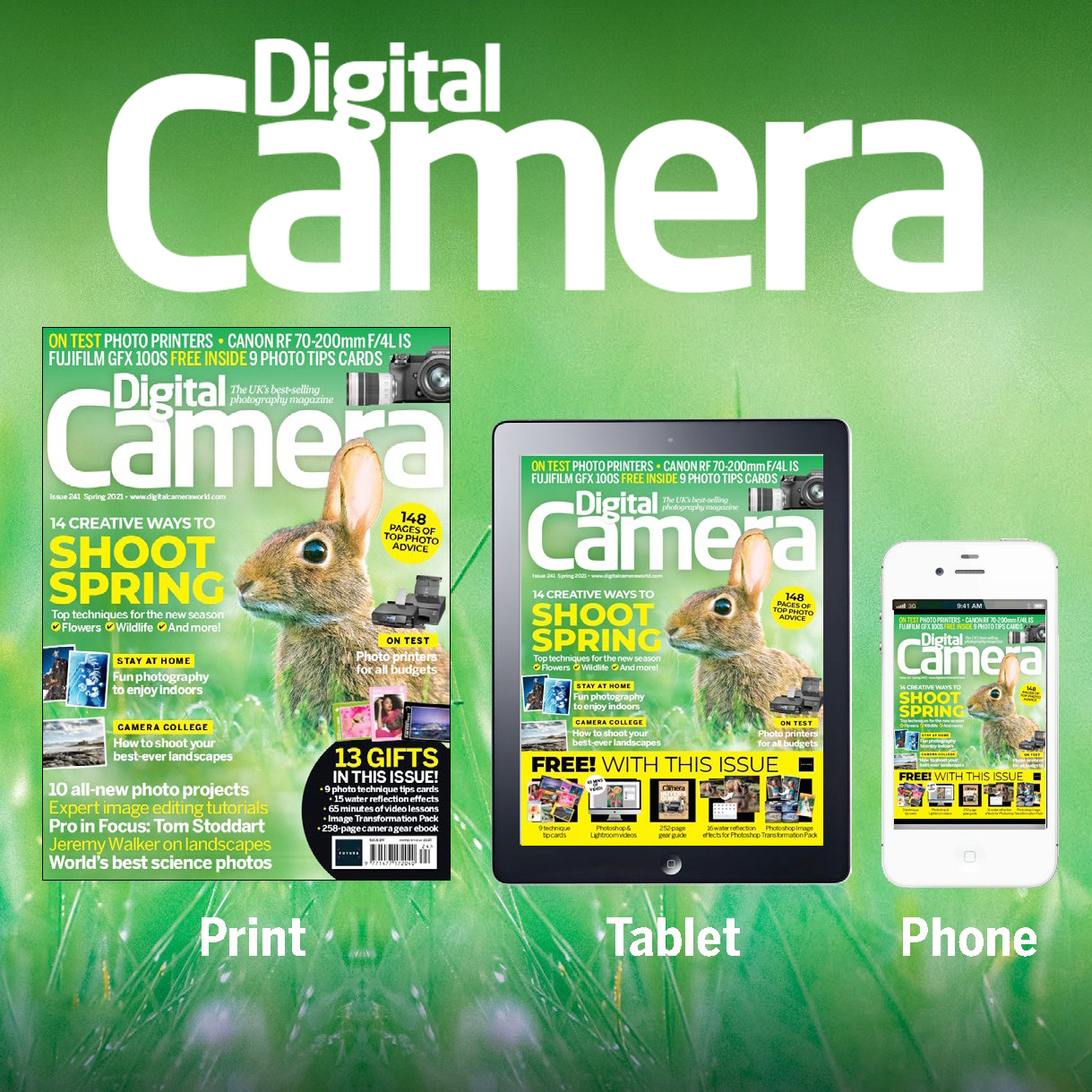Best flashgun

Finding the best flashgun for your camera can transform your photography. Hotshoe flashguns, alternatively known as strobes or speed lights, are not just about illuminating dark places – but also about freezing action, flattering portrait subjects, and a lot more.
But which to choose? That's what we're discussing here. There are loads of flashguns made by loads of different manufacturers, from the familiar names you'll recognize from the front of your camera, to third-party makers who create some really capable units at extremely competitive prices. The full-size, dedicated flashguns in this buying guide offer wide-ranging benefits, all of which we'll walk you through to help you choose the right one for your photography.
What features are important to you? TTL (Through The Lens) flash metering enables easy use in all sorts of conditions, while bounce and swivel heads give you the option of reflecting light off ceilings and walls for a softer effect. Motorized zooms automatically track the focal length of your lens to extend your flash's reach when shooting at longer focal lengths. To varying extents, the flashguns here also offer wireless connectivity, simplifying off-camera flash. Different photographers will have different needs, and a flashgun that doesn't do something you don't need it do may well be cheaper than one that does.
Here we've compiled a list of the best flashguns available right now, from cheaper options to pricier and more sophisticated units.
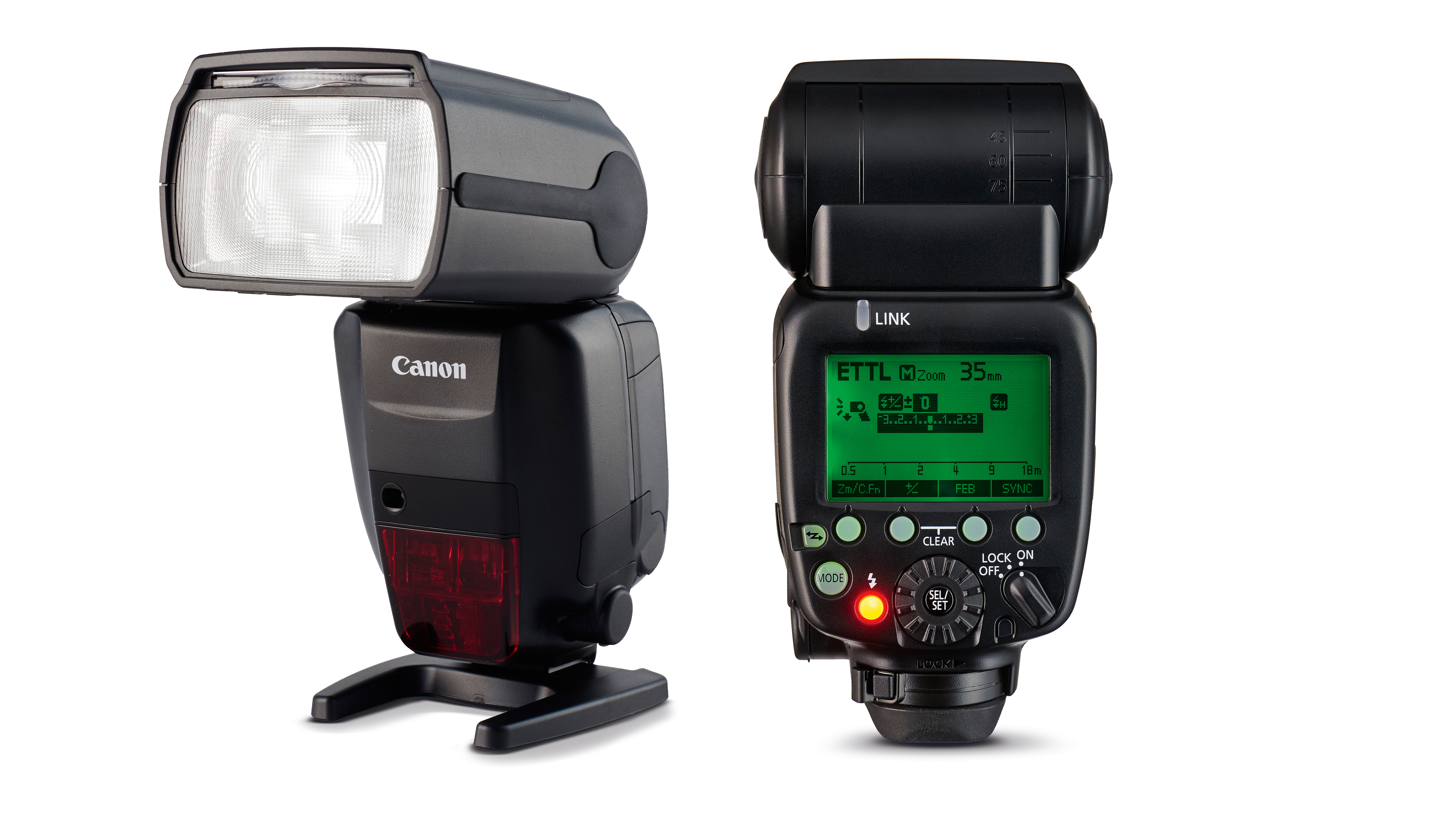
Canon Speedlite 600EX II-RT
Specifications
Reasons to buy
Not simply a more powerful version of the Speedlite 430EX III-RT with a GN (Guide number) 60 rating, Canon’s range-topping flashgun – the Canon EX600 II RT – boasts advanced features inside a weather-sealed construction. One crucial advantage over the 430EX III-RT is the inclusion of wireless master facilities, both in infrared and RF modes; RF has a 30m range that can work around corners or through obstacles. The motorized zoom has a range of 20-200mm and there’s full 180-degree swivel in both directions, while a programmable strobe/repeat mode is also on hand.
Compared with the original Speedlite 600EX-RT, the Mark II runs cooler, enabling up to 50% more flashes in continuous shooting. Maximum output is as powerful as any of the other top-rated flashguns on test, and recycling speeds are rapid when using alkaline as well as NiMH batteries. TTL accuracy is also excellent. Overall, the 600EX II-RT combines spectacular performance with intuitive ease of use.
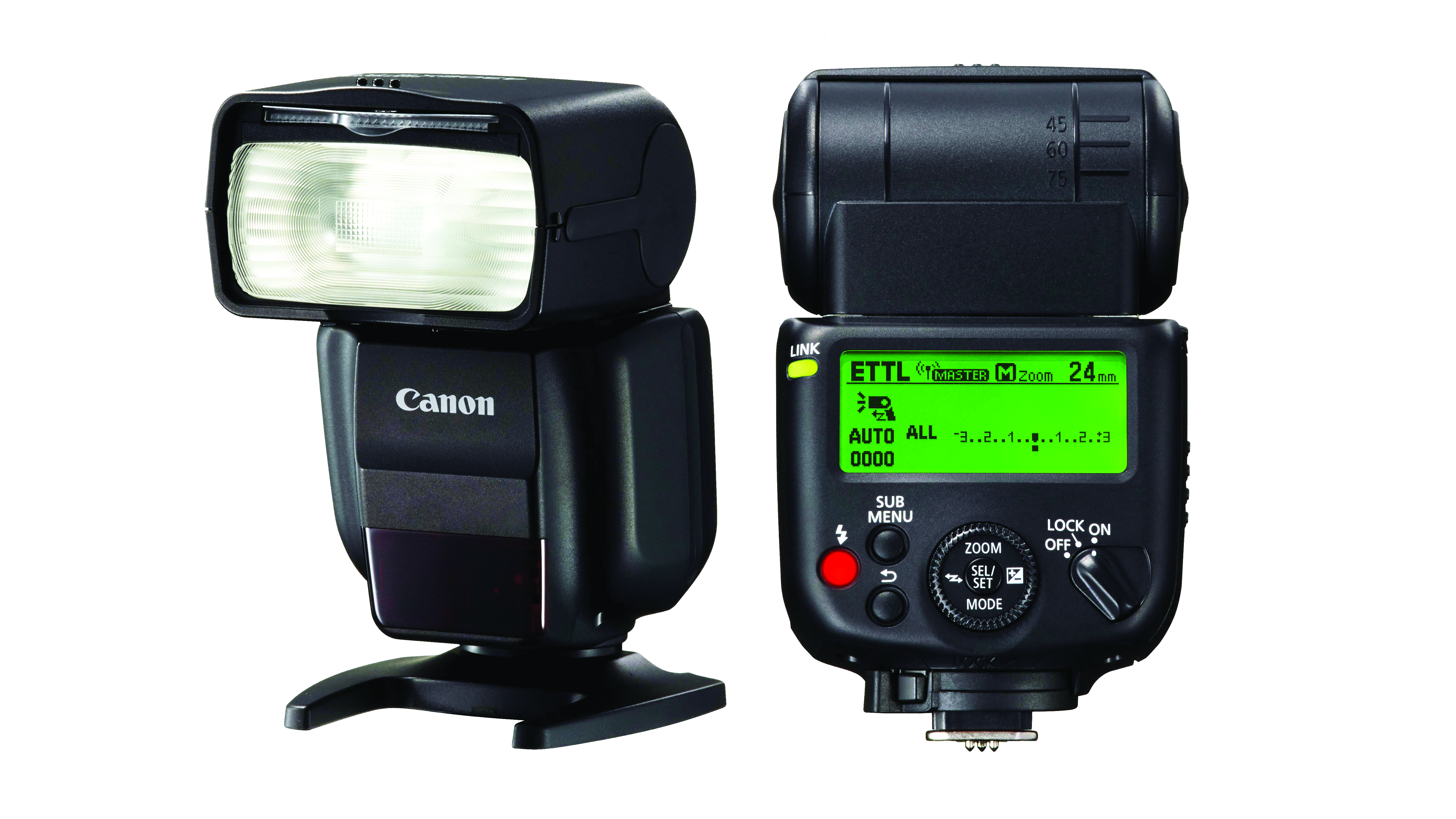
Canon Speedlite 430EX III-RT
Specifications
Reasons to buy
The recent Mark III edition of Canon’s Speedlite 430EX inherits a respectable maximum power rating of GN 43m (at ISO 100) and a motorized 24-105mm zoom head with 150 and 180 degrees of swivel, to the left and right, respectively. On-board controls are now more intuitive, and build quality is very good, albeit without the pro-grade finish of the 600EX II-RT. High-speed sync and rear-curtain flash modes are supported, but there’s no stroboscopic repeat mode.
Along with simplified controls and a cleaner layout, the Mark III also adds RF (Radio Frequency) triggering that was lacking in the previous iteration. You can use the flashgun as a wireless master or slave with other Canon RF-compatible flashguns, but it lacks an infrared wireless master mode. Further bonuses of RF linking are that the off-camera range is boosted from 10m to 30m, and triggering is more reliable in bright daylight. TTL flash metering accuracy is spot-on, recycling speeds are fast, and maximum output is pretty good.
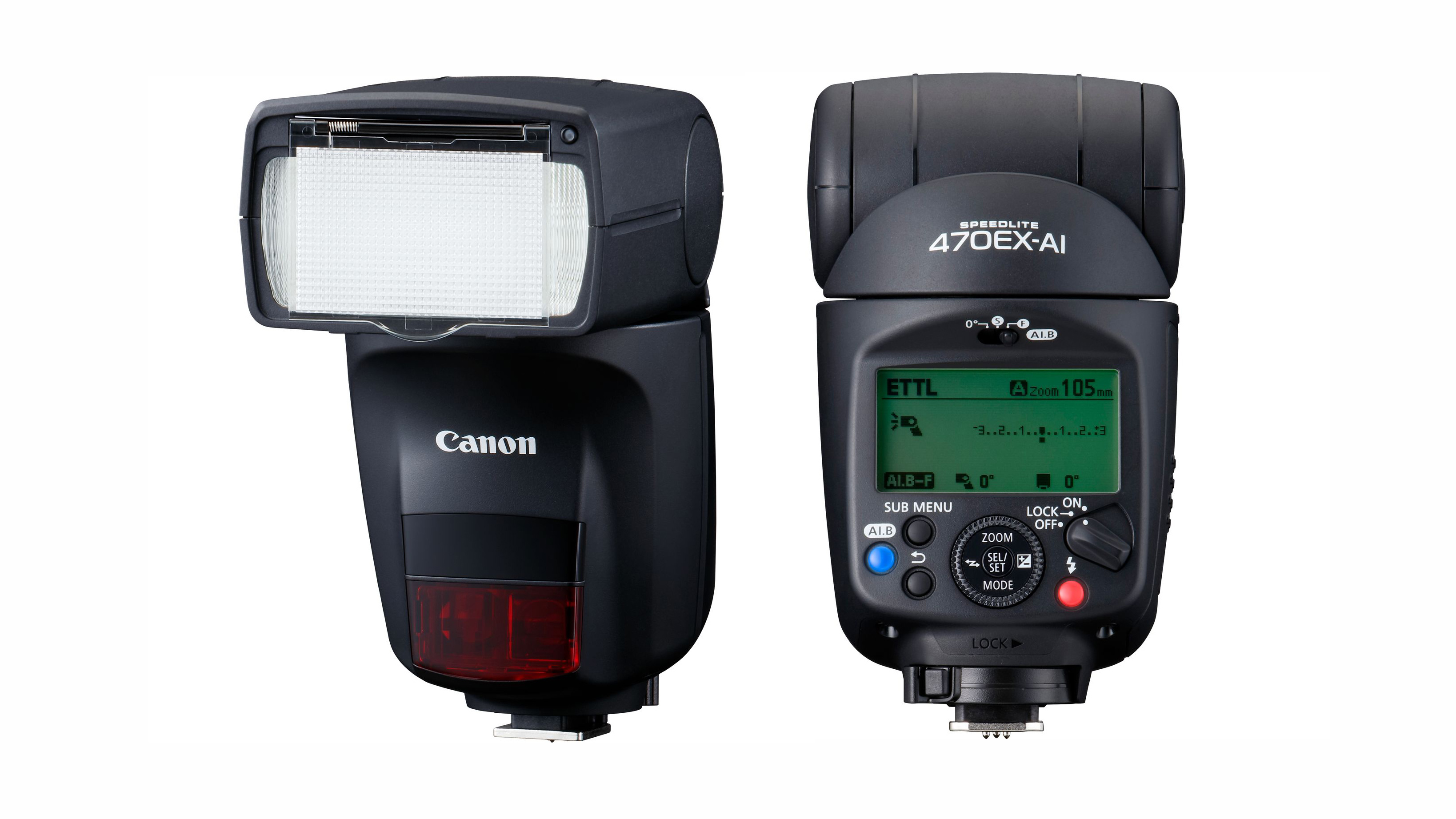
Canon Speedlite 470EX-AI
Specifications
Reasons to buy
The Canon Speedlite 470EX AI takes automation to a new level, with a motorized bounce and swivel head controlled by artificial intelligence. In fully automatic AI Bounce mode, the Speedlite fires a pre-flash pulse at the subject, then tilts vertically upwards and fires a second pre-flash pulse at the ceiling. It then calculates and sets the optimum bounce angle. If you’d rather bounce the flash off a white wall rather than a ceiling, or even fire it at a reflector panel, there’s also a semi-automatic AI Bounce mode. One disappointment is that fully automatic AI Bounce mode is unavailable when using some cameras, including all Canon DSLRs launched before the second half of 2014.
In other respects, the 470EX-AI is quite basic. It lacks RF (Radio Frequency) connectivity and, for wireless off-camera flash, it can only operate as a slave, not a master. It also lacks up-market features like a programmable strobe/repeat mode and even a pull-out reflector card. Ultimately, if you don’t feel the need for automatically controlled bounce angles, it’s pretty poor value for money
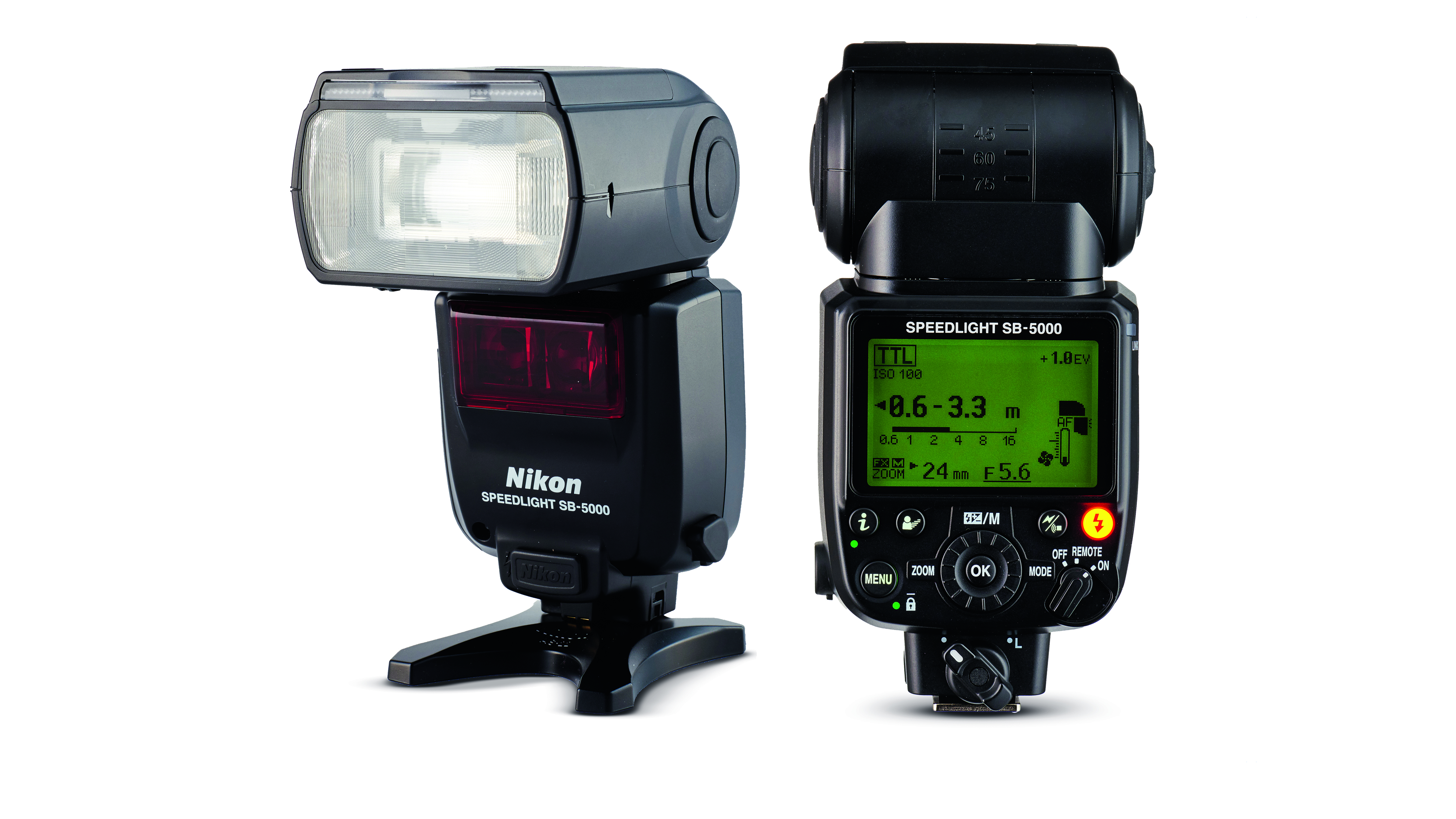
Nikon Speedlight SB-5000
Specifications
Reasons to buy
Nikon’s newest flashgun, the Nikon Speedlight SB-5000, replaces the SB-910 as the company’s flagship model. Compared with the SB-700 that's also on test, it adds more powerful GN of 55m (at 200mm, which changes to 34.5mm at 35mm), as well as a longer 24-200mm motorized zoom range, a programmable strobe/repeat flash mode, on-board selection of TTL and TTL-BL modes, and the option of using an external power pack. A new integral cooling system enables quick-fire shooting for 100 or more shots, even at full output power. Nikon has taken a leaf out of Canon’s book and incorporated RF wireless communication as well as infrared into the unit, although it’s not so well implemented.
Whereas the Canon 600EX II-RT features an RF transceiver, the SB-5000 only has a receiver and can’t work as a master. To use multiple flashguns with RF, you’ll need the WR-R10 transceiver, plus a WR-A10 adaptor if your camera has a 10-pin port, adding a significant chunk of money. Continuous shooting stamina aside, the main performance boost over the SB-700 is in maximum output power. TTL accuracy and recycling speeds are excellent.
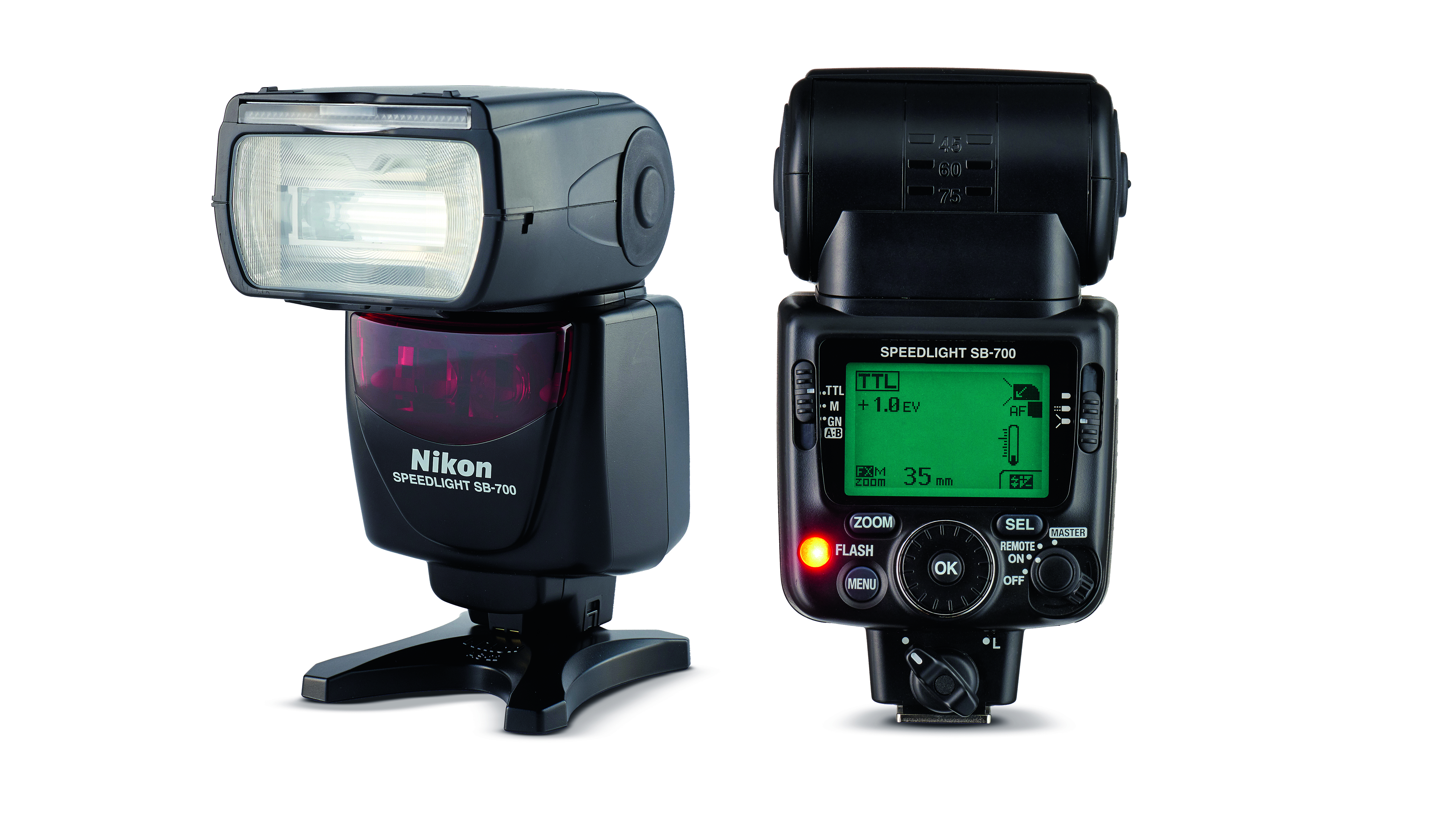
Nikon Speedlight SB-700
Specifications
Reasons to buy
The Nikon Speedlight SB-700 is mid-range Nikon Speedlight that offers a feast of features. Luxuries include full master and slave wireless functions, a range of illumination patterns, downward as well as upward tilt, and full 180-degree swivel in both directions. It beats the competing Canon 430EX III-RT in all these respects, as well as boasting a bigger 24-120mm zoom range. However, wireless connectivity is limited to infrared. There’s a tempting range of supplied accessories, including a diffusion dome and color-matching filters for both tungsten and fluorescent lighting.
On-board controls are easy to operate, but you can only switch between Nikon’s TTL and TTL-BL (Balanced Light) flash metering modes by changing the main exposure metering mode on the host camera body. Despite having the lowest rating of any flashgun on test – GN 38m at ISO 100 – the SB-700 wasn’t far below some competitors in our lab results, and beat the Metz 52 AF-1 at the 105mm zoom setting. Recycling is fast and TTL accuracy is excellent.
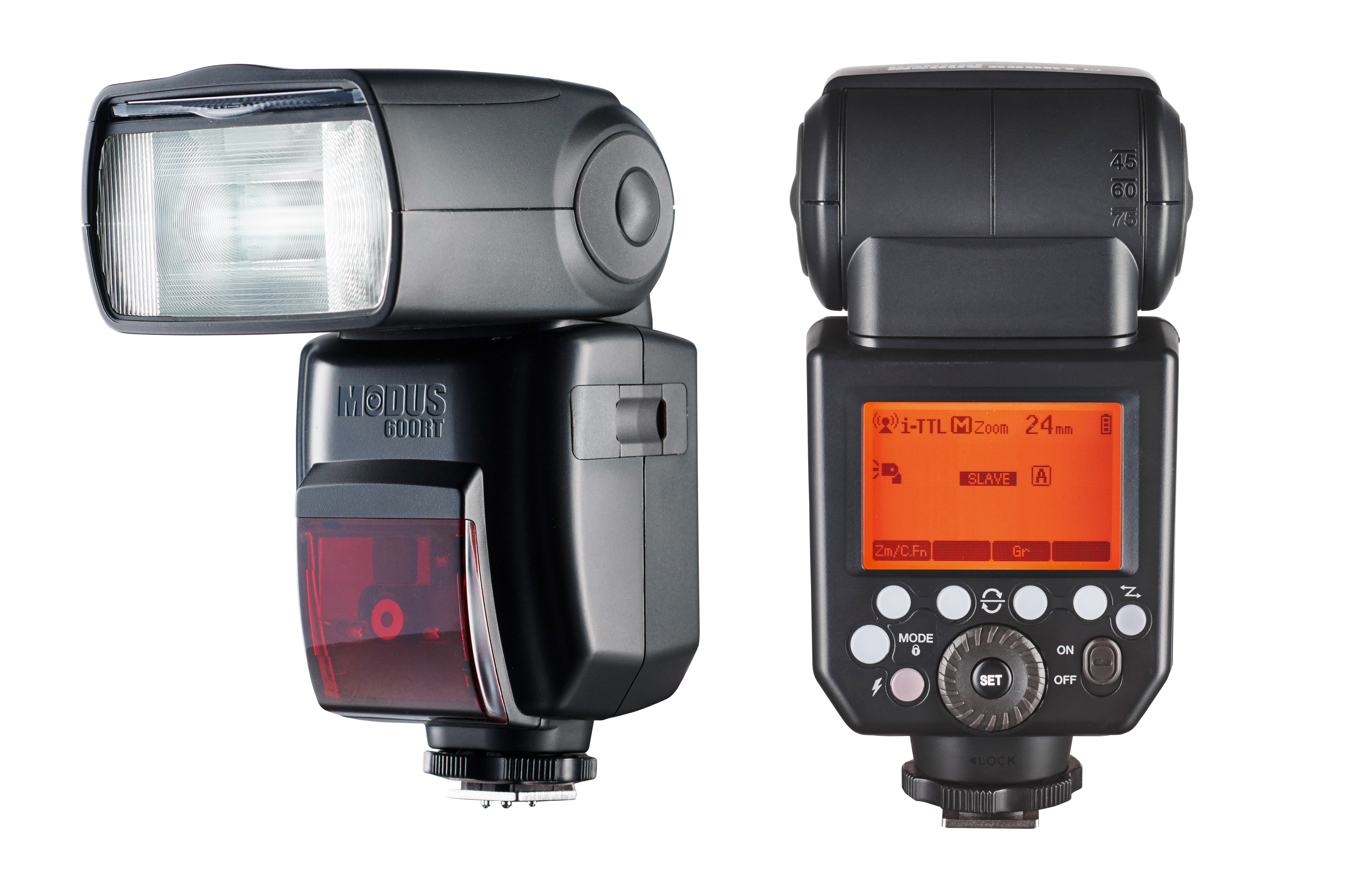
Hahnel Modus 600RT
Specifications
Reasons to buy
The Hahnel Modus 600RT flashgun matches or beats the features of camera manufacturers’ own-brand flagship models, but at a fraction of the price. Three different options are available, so you can buy the flashgun on its own, or as a wireless kit that includes a hot shoe mounting Viper RF (Radio Frequency) transmitter. There’s also a pro kit that comprises two flashguns and a Viper trigger, enabling the versatility of dual-flash lighting setups.
Advanced flash modes include high-speed sync and programmable repeat (stroboscopic) options, and wireless RF master/slave operation has a massive range of up to 100m. Another boost is that the flashgun is powered by a rechargeable Li-ion battery pack, instead of the usual four AA batteries. This gives far greater stamina, of up to 550 full-power flashes between recharging, along with very fast recycling speeds of 1.5 seconds after a full-power flash and just 0.7 seconds after a half-power flash. The only catch is that additional batteries (should you want any) are relatively pricey.
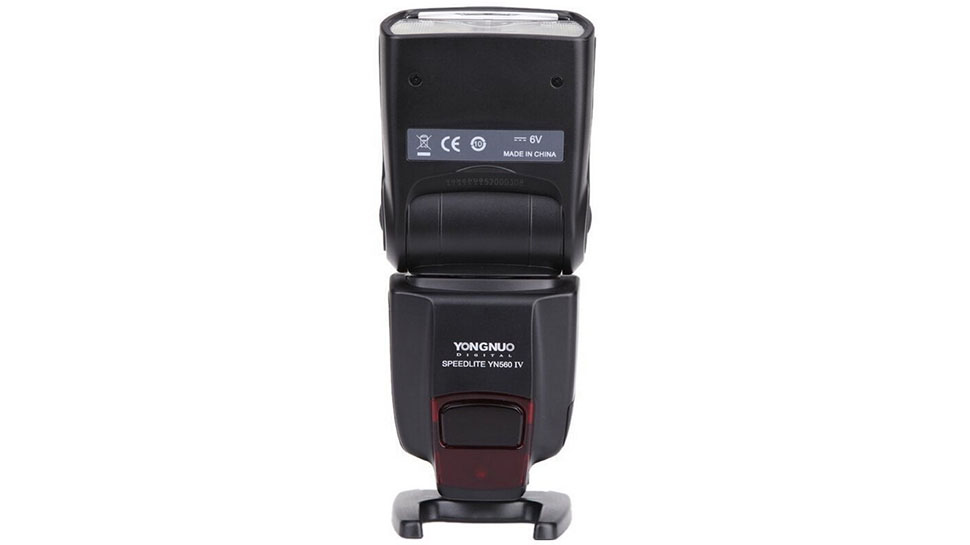
Yongnuo YN-560 IV
Specifications
Reasons to buy
At nearly double the price of some ultra-budget strobes from brands like Neewer, Yongnuo’s entry seems like questionable value. It doesn’t offer fancy features like TTL metering or High Speed Sync, and there’s only a single hot shoe contact, indicating this is a fully manual flashgun. But there are hidden depths.
For starters, the head can zoom to match the focal length of your lens. 24-105mm options are available, and while you need to set this manually, it’s only a button-press away. The large backlit LCD screen is also welcome, though its vertical viewing angles are restrictive, with the display fading considerably when viewed from above.
Then there’s the built-in radio frequency receiver that allows the flash to be used as a slave, triggered by a second YN-560 IV, or from Yongnuo’s equally well-priced YN560 TX transmitter. This provides a 100-meter wireless range (far superior to more basic, optically-triggered slave modes) and can trigger up to 6 groups of flashguns.
The YN-560 IV isn’t short on flash power, either, with a GN58 rating at ISO100/105mm. Our testing confirmed this, as the Yongnuo’s max output matched pricier speed lights, while also emitting even illumination free from color casts. Recycle times are also nice and speedy.

Nissin Di700A + Air 1
Specifications
Reasons to buy
The disarmingly simple on-board interface of the Nissin Di700A is based on a solitary Set button and a surrounding control wheel, both of which sit below a color screen. Operating modes include fully automatic, TTL, manual and no fewer than three wireless modes. Anything beyond rudimentary settings, like TTL exposure bias, requires the use of on-camera menus. These include rear-curtain sync, high-speed sync and manual zoom of the motorized 24-200mm head.
Wireless slave mode via infrared is available with the assignment of three independent groups, and there’s also a digital optical slave mode, which ignores the pre-flash pulses of master flashguns, plus a film slave mode, which triggers on the first pulse of light. Both modes require manual power settings. Recycling speed is very fast, despite a high maximum power output. The bundled Air 1 Commander slots into a hot shoe and enables advanced RF control and triggering of compatible Nissin flashguns in wireless slave mode.
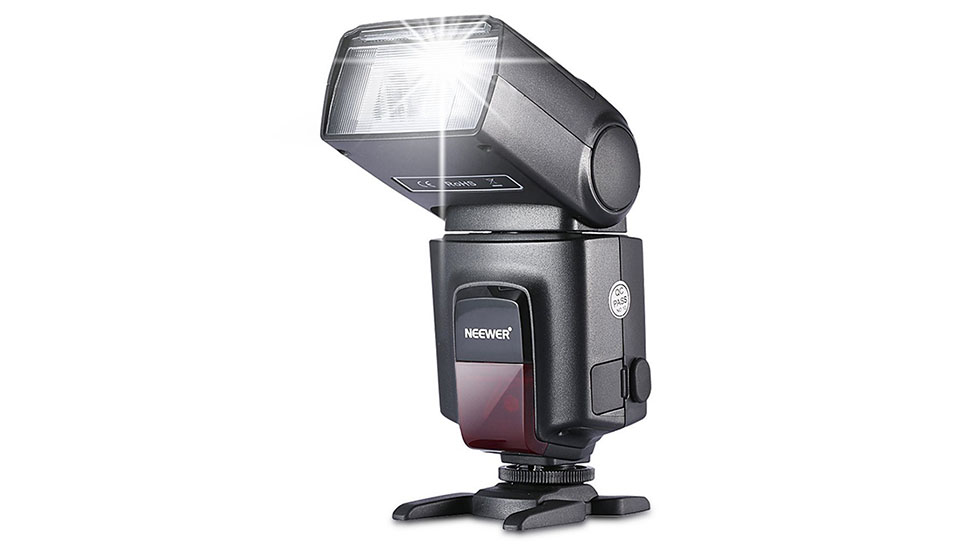
Neewer TT560
Specifications
Reasons to buy
This hugely popular flashgun certainly ticks the budget box, yet with a power rating of GN38, it matches the brightness of the much pricier GN40-rated Nissin i40 (more on which further down).
Power is adjustable in eight steps and flash coverage is fairly even, with only a hint of corner vignetting, though as you’d expect at this price, the head won’t zoom to match your lens's focal length. It does however sport 0-90 degrees tilt and 270 degrees of rotation, and conceals a typical bounce card and diffuser panel.
You get essential extras like S1 and S2 slave modes, with the latter being useful if your master flash emits pre-flash strobing. In S2 mode, the TT560 ignores the pre-flashes and only fires in sync with the main flash burst. Both modes work well, although as with any optically-triggered system, don’t expect perfect reliability outdoors.
Controls are very simple, with power and mode controls, and a test fire button. Being a completely manual flashgun, there’s no TTL, and the basic (yet metal) hot shoe has a single contact so will work in any standard camera hot shoe.
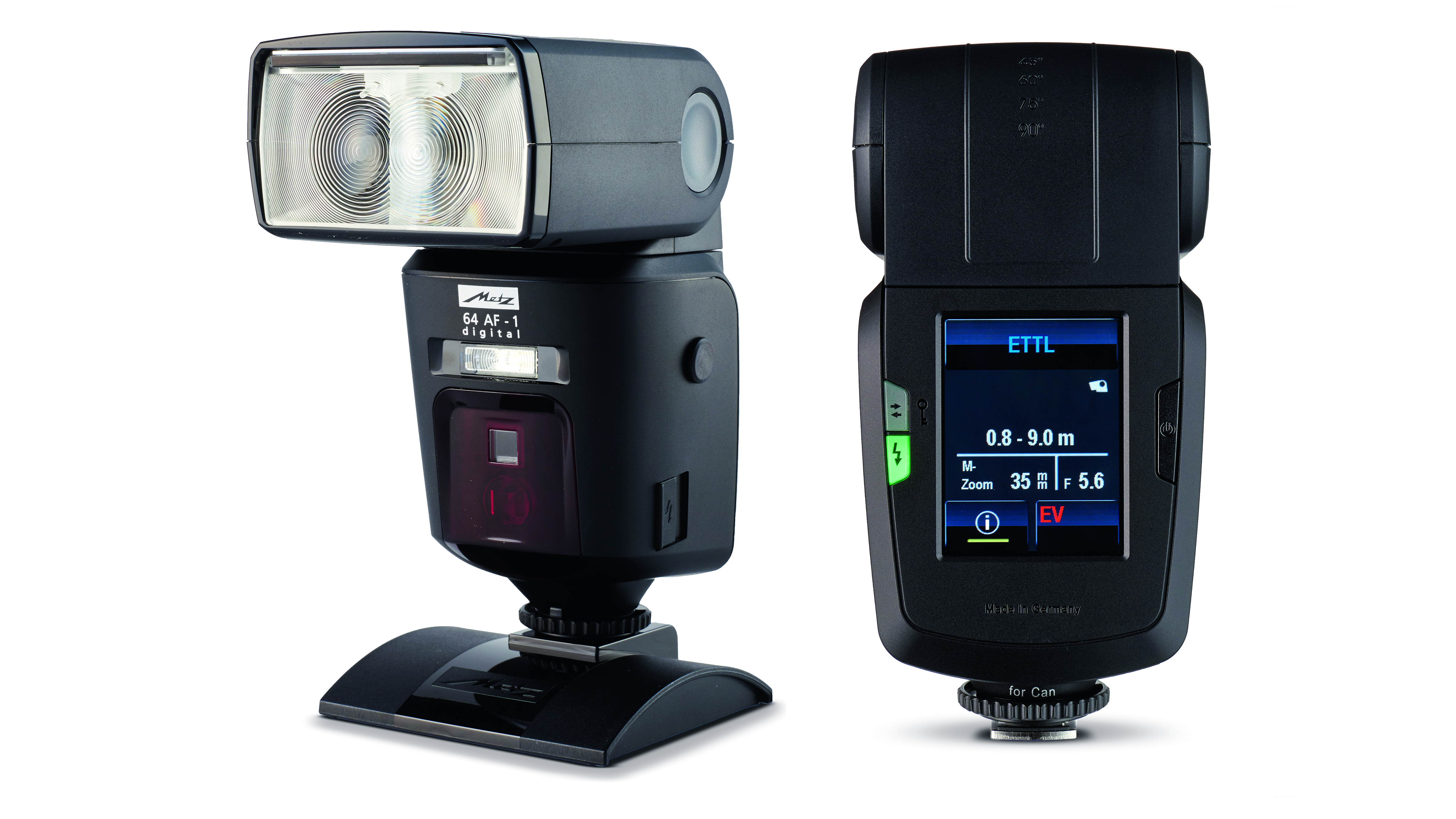
Metz Mecablitz 64 AF-1
Specifications
Reasons to buy
Offering a sizable step up from the 52 AF-1 (more on this later), the Metz Mecablitz 64 AF-1 is Metz’s range-topping powerhouse of a flashgun, with pro-level aspirations. It has a beefier GN 64m power rating (at 200mm, ISO 100) as well as a broader 24-200mm motorized zoom range, an extended tilt function that stoops to -9 degrees, and an additional strobe/repeat flash mode. It’s also the only flashgun here to feature a sub-flash module, ideal for adding a little fill-flash when using the head in bounce or swivel mode.
Like the 52 AF-1, this upmarket Metz has a touchscreen that should prove more intuitive for the smartphone generation – but this time it’s color rather than mono, and even clearer for menu navigation. Again, there are full wireless master and slave modes, but they’re limited to infrared, not supported in RF connectivity. TTL flash metering here is more accurate than in the 52 AF-1, with just a smidge of overexposure. Despite the bigger power output, recycling is faster on NiMH batteries, but there’s a big slowdown if you use alkaline cells.
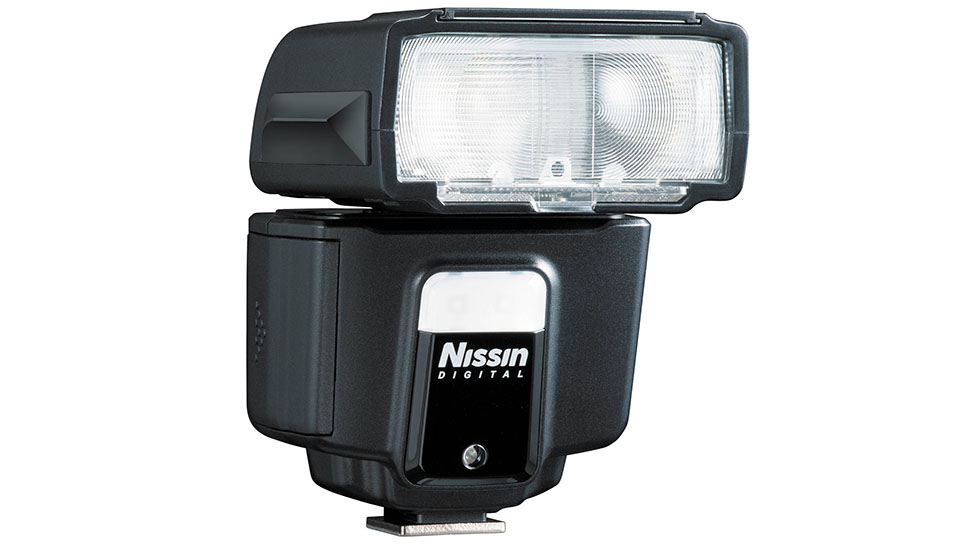
Nissin i40
Specifications
Reasons to buy
The i40 is Nissin’s attempt at making a compact flashgun that doesn’t sacrifice any performance. Unlike some slimmed-down speed lights, the i40 is powered by 4 AA batteries, not just 2, so you can expect at least 220 flashes per set/charge, as well as fast recycle times.
We found flash power to be consistent with Nissin’s GN40 rating, making this one of the less powerful options here, but still a stop brighter than the competing Kenro Mini Speedflash. With the auto-zoom head set at 50mm to match our test lens, we noticed some minor vignetting, but no more so than with other zoom flashguns.
Rather than trying to cram in a LCD and buttons on the rear panel, Nissin has kept things simple and there are just two dials. One sets the flash mode (TTL, manual, TTL slave and manual slave options are available), the other dial adjusts flash power (or exposure compensation when in TTL mode). It’s a refreshingly simple and direct control system that works well, although we did encounter a couple of crashes that required the battery compartment to be opened and closed before the i40 would respond again.
Otherwise, build quality feels excellent. The head boasts a full range of articulation, there’s High Speed Sync capability, and even a useful LED video light with 9 levels of brightness adjustment and a 3.5-hour runtime.
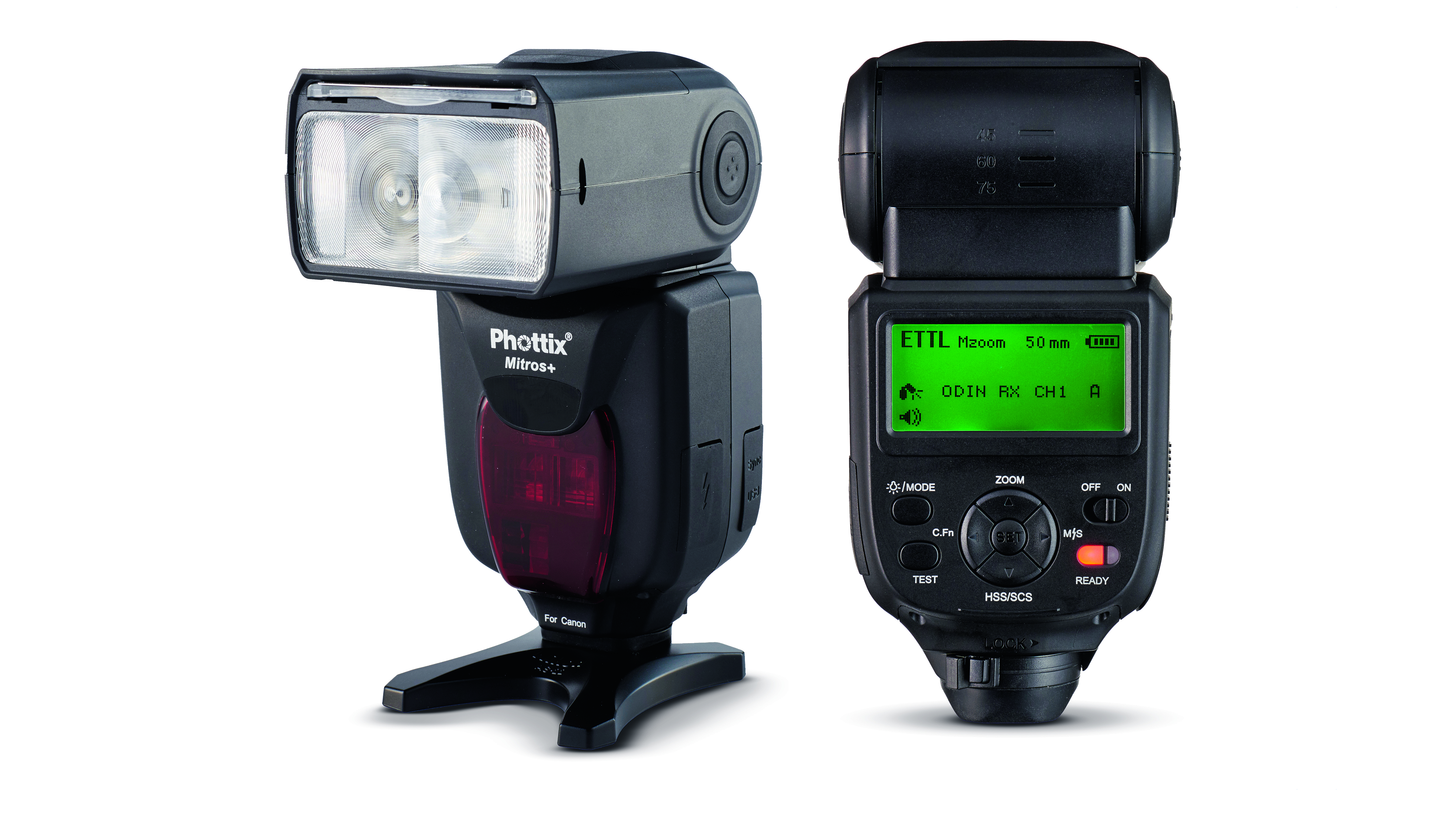
Phottix Mitros+ TTL Transceiver Flash
Specifications
Reasons to buy
Available in Canon, Nikon and Sony options, the Phottix Mitros+ TTL is a seriously pro-grade flashgun. It offers a full range of high-speed sync, rear-curtain and programmable strobe/repeat flash modes, a generous GN 58m (at 105mm, ISO 100) power rating and an excellent build quality to boot. There’s an external power pack socket and, like the Canon 600EX II-RT, the Phottix has a weather-sealed mounting foot to shroud the camera’s hotshoe. Also like the flagship Canon, the Phottix includes an RF transceiver. This puts it ahead of the Nikon Speedlight SB-5000, because you can use the Phottix as a wireless RF master as well as a slave unit in multi-flashgun setups, without having to buy an additional RF transmitter or transceiver. Even so, the flashgun is also compatible with Phottix Odin and Strato radio triggers. TTL flash is a bit on the bright side, but at least it’s consistent. The maximum output lags a little behind the most powerful flashguns in the group but, overall, the Phottix is a feature-rich and a solid performer.
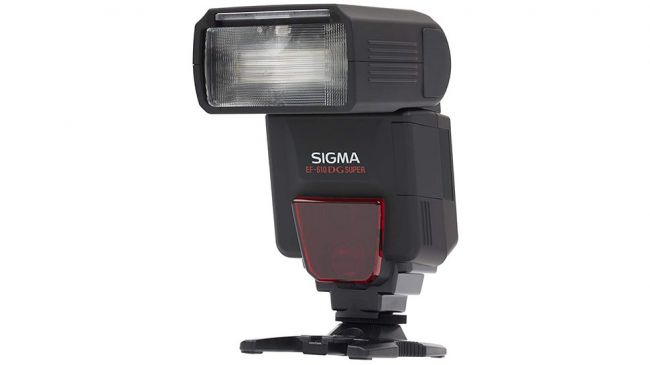
Sigma EF-610 DG ST
Specifications
Reasons to buy
A flashgun from a top-tier brand like Sigma for a bargain-basement price - what’s the catch? Well judging by the spec sheet, there isn’t one. The EF-610 is rated at a huge GN61 power rating, making it the most potent performer here. Our testing backs this up, as we recorded the brightest output on test - this Sigma really packs a punch - and the illumination is even, with only a trace of vignetting.
There’s TTL compatibility with Canon and Nikon DSLRs, and the head is of the zoom variety, so it can focus the flash burst to suit focal lengths from 17mm to 105mm. There’s also a full range of tilt and rotation movement for bouncing the flash burst, though both axes are locked by default with individual release buttons, which can interfere with quick head adjustments.
But compromises have been made. The plastic hot shoe stings considering even the cheapest rival flashguns sport a metal mount, but this is nothing compared to the controls. Forget a backlit LCD screen - the Sigma is back to basics, big time. A single switch sets the flash mode between TTL, and two manual modes: one full power, the other 1/16th power. There’s no other power adjustment, and the EF-610 can’t be used as a slave flash as there’s no form of wireless triggering, limiting you to on-camera or corded use only.
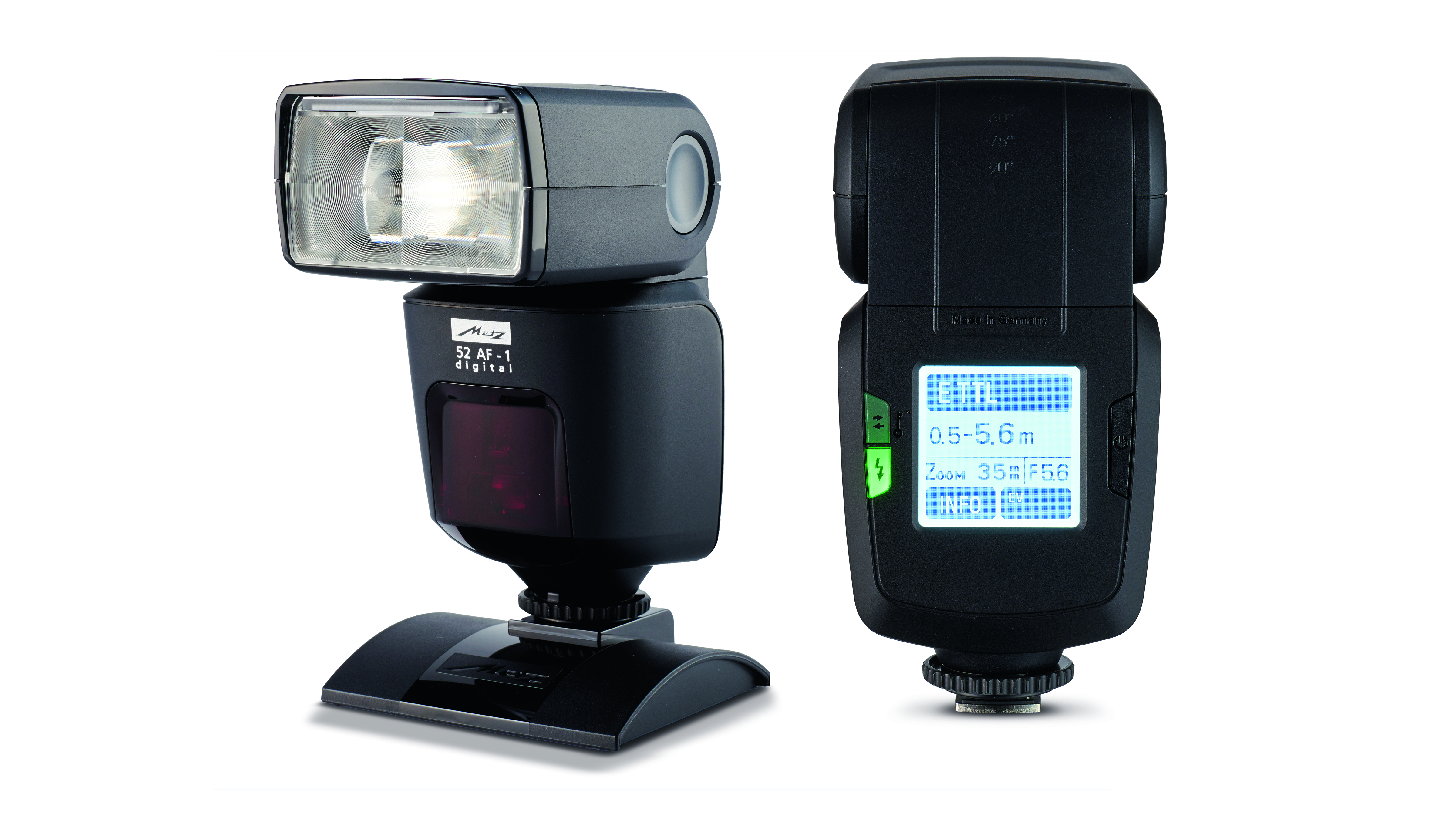
Metz Mecablitz 52 AF-1
Specifications
Reasons to buy
Take a peek around the back of the mid-range Metz, and the Metz 52 AF-1 Digital Flashgun looks too simple to be taken seriously, with just a pair of control buttons. You can, however, prod a sophisticated set of features into action, thanks to the flashgun’s mono touchscreen. The GN 52m (at ISO 100) power rating is a cut above similarly priced Canon and Nikon flashguns, and the range of additional dedicated options stretches to Micro Four Thirds, Pentax and Sony. As with all other flashguns on test, the 52 AF-1 features a bounce-and-swivel head with motorized zoom – 24-105mm in this case – complete with a wide-angle diffuser and reflector card. It lacks the RF triggering of some flashguns here but, unlike the Canon 430EX III-RT, infrared wireless modes include both master and slave functions – check the Metz website for compatibility. Outright power levels don’t quite match expectations and recycling speeds are a little pedestrian, while TTL flash metering tends to be a bit bright. Even so, performance is good overall and slick controls make this Metz easy to live with.
Get the Digital Camera World Newsletter
The best camera deals, reviews, product advice, and unmissable photography news, direct to your inbox!
The sister print publication to this website, Digital Camera Magazine is Britain's best-selling photography publication – and it can also be purchased outside the United Kingdom as Digital Camera World.
Digital Camera Magazine is packed with more expert advice and more inspirational images than any other title, with the sole aim of helping you become a better photographer. Every issue we also bring you a selection of great gifts which are designed to help you get more from your photography – everything from tips cards and cheat sheets to free software and bookazines.
In addition to inspirational images, interviews, projects, mini tests and tutorials, each issue is packed with news, reviews and comparisons, as well as photographer vs photographer shootouts and head-to-head challenges using the best photo editing software.
The magazine is captained by Editor Niall Hampton.
